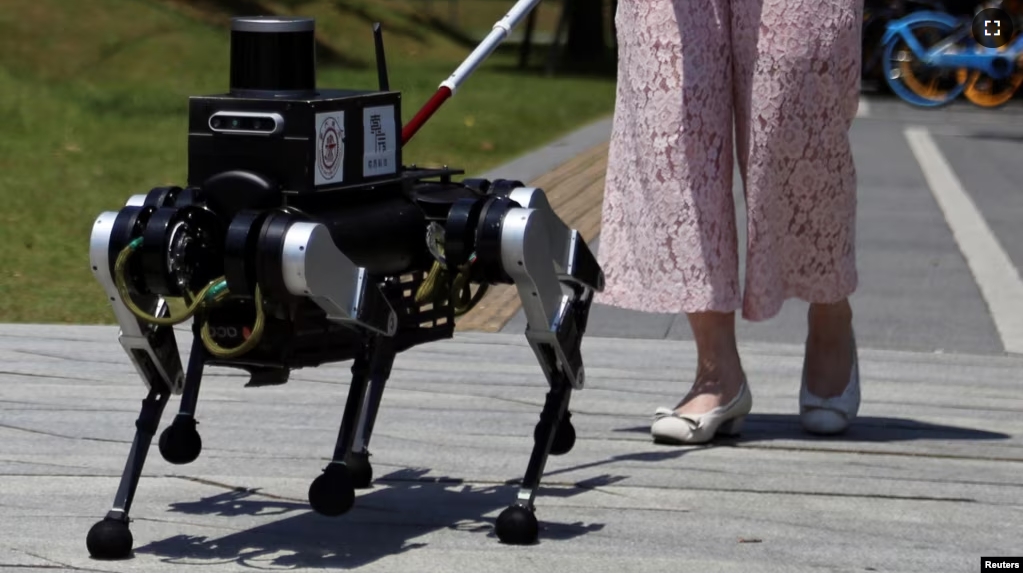Researchers in Shanghai are developing a robot “guide dog” that could help blind people.
The robot is currently being tested in Shanghai. The machine uses cameras and sensors to navigate its environment. It is able to recognize traffic light signals which traditional guide dogs are unable to recognize.
The robot can communicate. It is able to listen and speak with a blind operator. The robot also uses artificial intelligence (AI) to recognize voices, plan ways to go from place to place and identify traffic lights.
The robot dog is described as being about the size of an English bulldog but a little wider than a real dog. It has six legs instead of four because the researchers say the extra legs make it more stable, making its movements smoother.
Professor Gao Feng is the head of the research team that is developing the dog at Jiao Tong University’s School of Mechanical Engineering. “When three legs are lifted, there are still three legs…It is the most stable shape,” he said.
Forty-one-year-old Li Fei and 42-year-old Zhu Sibin are among the people with vision problems who are helping the Jiao Tong University team. They are testing the dog using Chinese-language commands.
Li is completely blind while Zhu has limited eyesight. He normally uses a cane to walk.
Li said, “If this robot guide dog comes onto the market and I could use it, at least it could solve some of my problems in travelling alone.”
Robot guide dogs are also under development in Australia and Britain. But China has a big shortage of traditional guide dogs. Gao said there are just over 400 guide dogs in China for nearly 20 million blind people.
Pet ownership and service animals are a fairly new idea in the country. Many workplaces, restaurants and public areas do not welcome a usual service dog like a Labrador.
The supply of real dogs is limited by breeding and training needs. Gao said the production of robot guide dogs could be increased to an industrial level, especially in a manufacturing center like China.
“It’s a bit like cars. I can mass-produce them in the same way as cars, so [they] will become more affordable,” Gao said.
The researcher thinks there could be a large market for his robot dogs. “…There might be tens of millions of people in the world who need guide dogs,” he added.
I’m Mario Ritter, Jr.
Casey Hall and Xihao Jiang reported this story for Reuters. Mario Ritter, Jr. adapted this report for VOA Learning English.
_________________________________________
Words in This Story
stable –adj. not easily knocked over; firmly set
cane –n. a stick used to help a person walk
breeding –n. the practice of raising animals so they produce more animals like them
